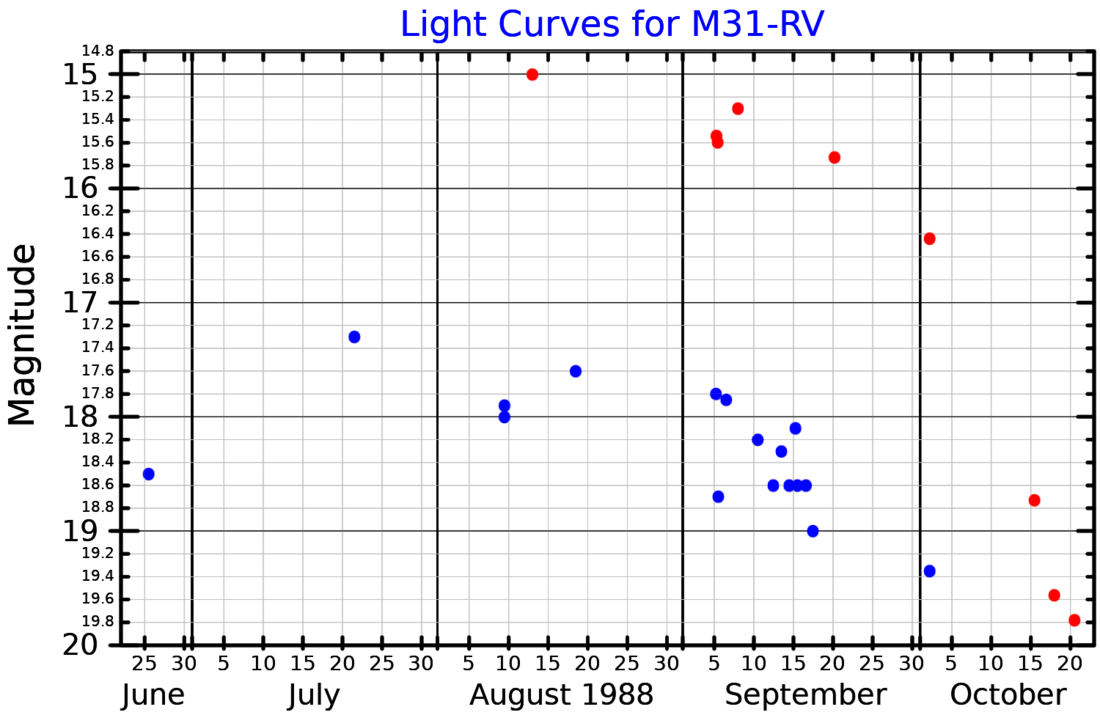M31-RV
Possible red cataclysmic variable star in the constellation Andromeda From Wikipedia, the free encyclopedia
M31-RV is a possible red cataclysmic variable star located in the Andromeda Galaxy (M31) that experienced an outburst in 1988,[4] which was similar to the outburst V838 Monocerotis experienced in 2002.[3] At peak brightness, M31-RV was the most luminous red supergiant in the Local Group.[4] Such objects have been called luminous red novae or intermediate-luminosity red transients. During the outburst, both V838 Mon and M31-RV reached a maximum absolute visual magnitude of -9.8.[1]
 Light curves for M31-RV, adapted from Boschi and Munari (2004).[1] The red dots show the red band magnitude, and the blue dots show the blue band magnitude. | |
| Observation data Epoch J2000.0 Equinox J2000.0 | |
|---|---|
| Constellation | Andromeda |
| Right ascension | 00h 43m 02.433s[2] |
| Declination | 41° 12′ 56.17″[2] |
| Characteristics | |
| Evolutionary stage | M supergiant[1] |
| Spectral type | M0I-M7I[1] |
| Variable type | Luminous Red Nova |
| Details | |
| Radius | 2,000 during outburst[3] R☉ |
| Luminosity | 900,000 during outburst[3][a] L☉ |
| Temperature | 4,000 during outburst[3] K |
| Other designations | |
| M31 V1006, M31 V1007, McD 88 1 | |
| Database references | |
| SIMBAD | data |
In 2006, the area around M31-RV was observed using the Hubble Space Telescope, but only red giants were seen. Most likely the star either became too dim for Hubble to see, the star is a companion of one of the red giants, or the star is one of the red giants themselves.[2]
M31-RV reached a peak visual magnitude of 17 before fading rapidly and showing dust formation. The most likely explanation states that these outbursts occur during stellar merger events.[5]
See also
Notes
- Calculated using the Stefan-Boltzmann Law using the given values for radius and temperature in the reference
References
Wikiwand - on
Seamless Wikipedia browsing. On steroids.
